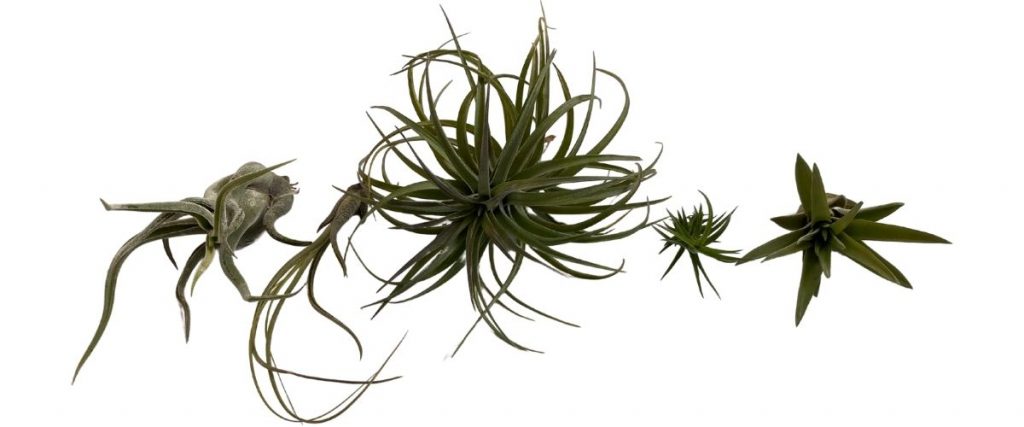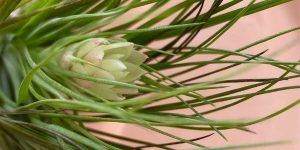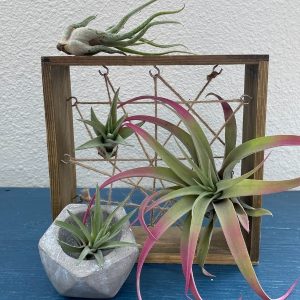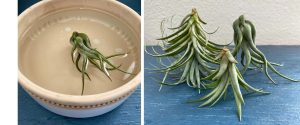Tillandsia (Air Plant) Care
Tillandsia species are wonderful indoor houseplants that add a fun and exciting flare to your décor.

What are tillandsias?
Tillandsias, commonly known as air plants, are part of the bromeliad family. In addition, they are one of many examples of epiphytes, meaning that they grow on other plants and structures. However, epiphytes are not parasitic and do not take moisture or nutrients from their host. Instead, epiphytes use their leaves (instead of their roots) to absorb moisture and nutrients. Their roots are only used to attach to other surfaces. Tillandsias use trichromes, specialized structures on their leaves, to trap moisture and dust. Because they get all their nutrients from the atmosphere, they grow without the need for soil, hence the term “air plant.”
There are over 500 different species of Tillandsia which are native mostly to the southern United States, Central America, and South America. In nature, the mesic types attach to other plants, typically trees, in the rainforest canopy. The xeric types are from desert-like climates and typically attach to rocks.
Do tillandsias produce flowers?

Not all tillandsias will flower indoors, but some will, and it may take years for this to happen. Blooming is the end of life for that individual plant, but typically blooming tillandsias will produce pups – small offshoots that will become full-grown tillandsias.
How can I display tillandsias?

Because they do not require soil, tillandsias can be displayed in an infinite number of ways. They can be tucked into vignettes, tied on to displays using wire or string, and most are even happy in glass terrariums (so long as they get adequate air flow after being watered). It is best if the tillandsia can be removed from the display to be soaked in water, but it is possible to hydrate the tillandsia by misting it frequently (just be sure the mounting material does not hold water which could cause the plant to rot).
How do I care for tillandsias?
Since air plants typically receive bright, indirect light (for example, light filtered through a bit of the rainforest canopy), they prefer the same in your home. An east or west facing window is perfect!
In our dry Colorado climate, soaking is the best method for providing water to your air plants. Simply soak in a bowl of water for one hour, once a week. Then dry the plants upside down for a few hours to prevent the center from retaining too much moisture and rotting. Tillandsias appreciate good air circulation, but do not put them near a fan or heat vent where they might dry out too quickly.

If the tips of the leaves become dry and brown, or if the leaves start to curl or roll, it may mean that the plant is dehydrated. If this happens, increase the humidity around your tillandsia by misting it with water on a regular basis or putting it in a terrarium.
While not required, tillandsias can benefit from light fertilization about once a month. Too much fertilizer can be detrimental to air plants, so it is best to use either an air plant specific fertilizer or dilute a typical houseplant fertilizer to about one-quarter of the suggested dosage. Apply the fertilizer by lightly misting the plant.
Visit us and find a new fabulous tillandsia to add a bit of flare to your home!
Resources
https://gardeningsolutions.ifas.ufl.edu/plants/houseplants/air-plants.html
https://extension.psu.edu/tillandsia-air-plants
https://aces.illinois.edu/news/tillandsia-air-plant-catching-eye-indoor-gardeners
Back to Blog